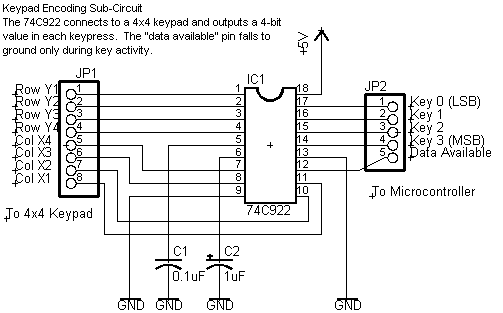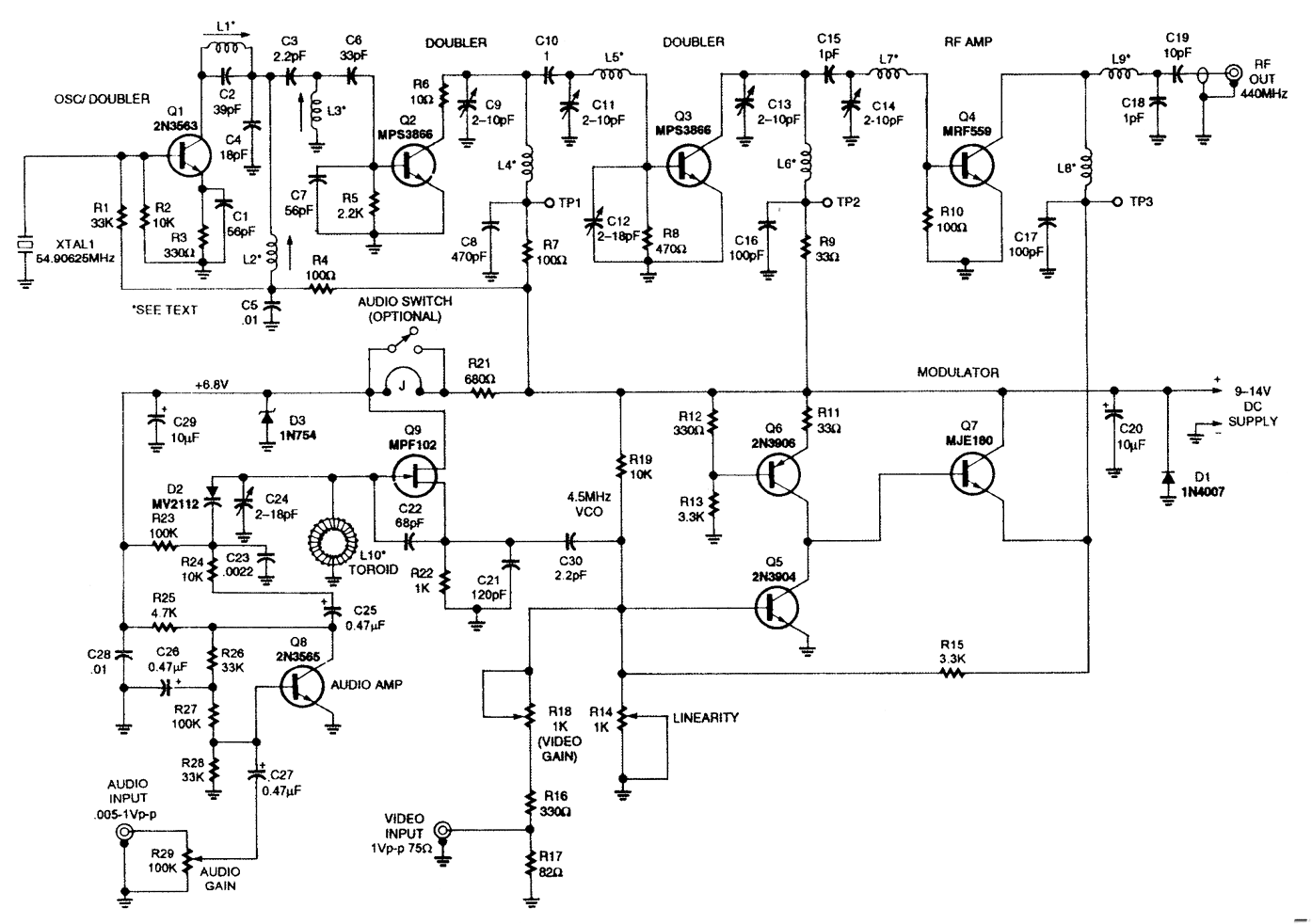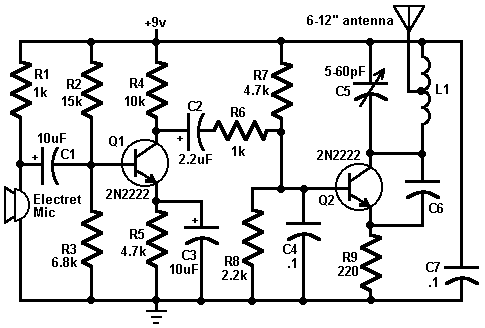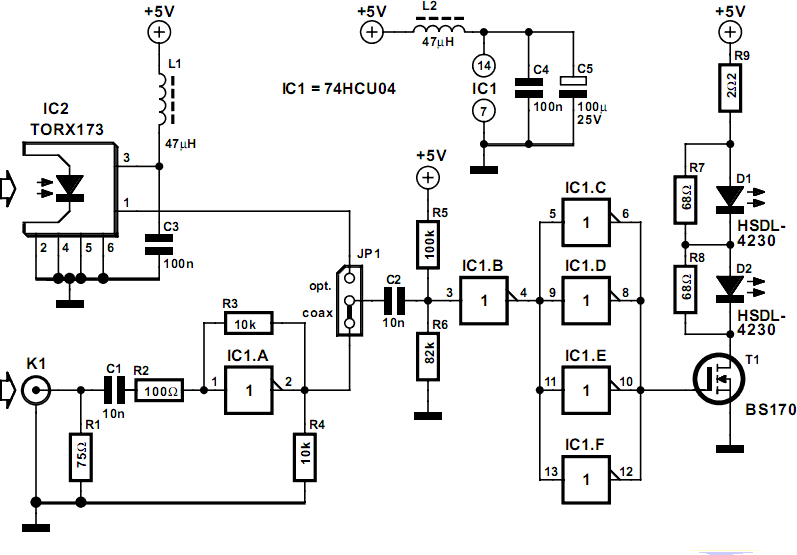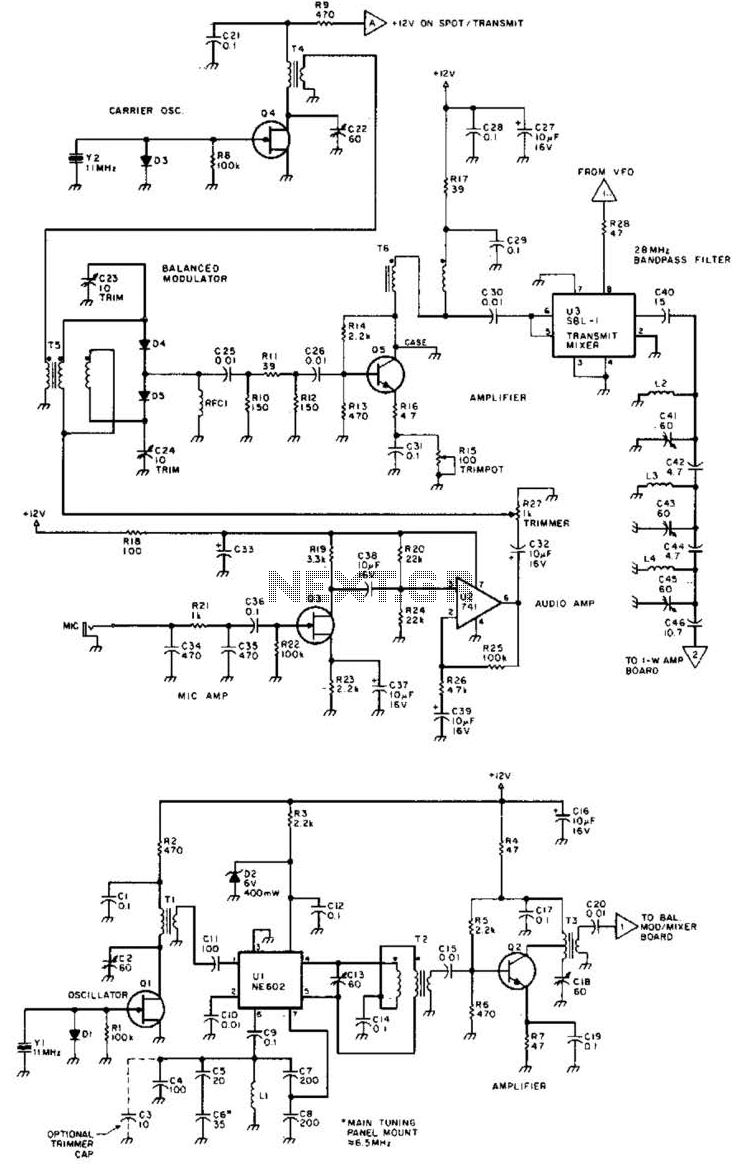
2 transistor fm transmitter
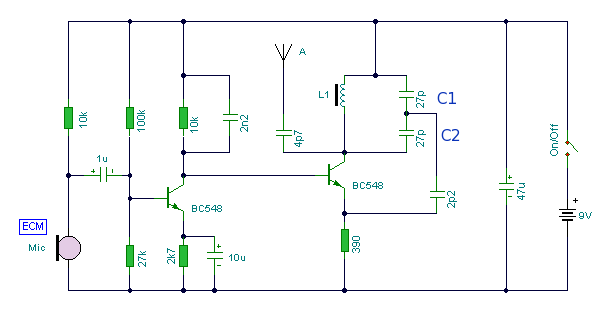
A pair of BC548 transistors has been utilized in this circuit. Although they are not specifically designed for RF applications, they still provide satisfactory performance. An ECM microphone from Maplin Electronics, model FS43W, has been employed. This is a two-terminal ECM, but conventional dynamic microphone inserts can also be used by simply omitting the front 0k resistor. The inductor L1 was sourced from Maplin, part number UF68Y, and consists of 7 turns on a half-inch diameter ferrite core with a tuning slug. The tuning slug is adjusted to set the frequency of the transmitter. The operating range measured from 70 MHz to approximately 120 MHz. The aerial is made from a few inches of wire, and lengths exceeding 2 feet may introduce unwanted oscillations, preventing the circuit from functioning properly. Although RF circuits are ideally constructed on a PCB, it is possible to use veroboard, keeping all leads short and maintaining proper spacing at designated points. Additionally, it is advised not to hold the circuit in hand while speaking, as body capacitance can act like a 200 pF capacitor shunted to ground, dampening all oscillations. Initial hands-on experience has confirmed this issue. The frequency of oscillation can be determined from the circuit section, and an example is now included in the Frequency Analysis section.
The circuit utilizes two BC548 transistors, which are general-purpose NPN transistors commonly used in low-frequency applications. While not optimized for high-frequency RF transmission, they can still operate effectively within the specified range. The ECM microphone, model FS43W, operates as a transducer, converting sound waves into electrical signals. Its two-terminal configuration simplifies integration into the circuit, allowing for straightforward connections.
The inductor L1, constructed with 7 turns of wire around a ferrite core, plays a crucial role in determining the resonant frequency of the circuit. The tuning slug allows for fine adjustments to the inductance, enabling precise tuning of the transmitter to the desired frequency range. The circuit's operational frequency, spanning from 70 MHz to 120 MHz, is suitable for various applications, including amateur radio and short-range communication.
The aerial design is critical for efficient transmission. The recommendation to use wire lengths of no more than 2 feet helps to mitigate the risk of parasitic oscillations, which can arise from longer lengths and adversely affect circuit performance. The use of veroboard for construction, while not ideal, is a practical approach for prototyping and testing RF circuits. Careful layout and short lead lengths are essential to minimize inductive and capacitive coupling, which can lead to instability.
Finally, the note regarding body capacitance emphasizes the importance of proper handling during operation. Holding the circuit while speaking can introduce additional capacitance that interferes with the intended oscillation frequency, leading to signal degradation. This aspect highlights the need for careful consideration of environmental factors in RF circuit design and operation. The frequency analysis section provides further insights into the performance characteristics of the circuit, assisting in understanding its behavior and optimizing its functionality.I accept acclimated a brace of BC548 transistors in this circuit. Although not carefully RF transistors, they still accord acceptable results. I accept acclimated an ECM Mic admit from Maplin Electronics, adjustment cipher FS43W. It is a two terminal ECM, but accustomed activating mic inserts can additionally be used, artlessly omit the advanced 1 0k resistor. The braid L1 was afresh from Maplin, allotment no. UF68Y and consists of 7 turns on a division inch artificial above with a affability slug. The affability bang is adapted to tune the transmitter. Actual ambit on my ancestor acquainted from 70MHz to about 120MHz. The aeriform is a few inches of wire. Lengths of wire greater than 2 anxiety may clammy oscillations and not acquiesce the ambit to work. Although RF circuits are best complete on a PCB, you can get abroad with veroboard, accumulate all leads short, and breach advance at adapted points. One final point, don`t authority the ambit in your duke and try to speak. Body capacitance is agnate to a 200pF capacitor shunted to earth, damping all oscillations. I accept had some aboriginal duke acquaintance of this problem. The abundance of cadence can be begin from the approach section, and an archetype now appears in the Ambit Analysis section.
🔗 External reference
The circuit utilizes two BC548 transistors, which are general-purpose NPN transistors commonly used in low-frequency applications. While not optimized for high-frequency RF transmission, they can still operate effectively within the specified range. The ECM microphone, model FS43W, operates as a transducer, converting sound waves into electrical signals. Its two-terminal configuration simplifies integration into the circuit, allowing for straightforward connections.
The inductor L1, constructed with 7 turns of wire around a ferrite core, plays a crucial role in determining the resonant frequency of the circuit. The tuning slug allows for fine adjustments to the inductance, enabling precise tuning of the transmitter to the desired frequency range. The circuit's operational frequency, spanning from 70 MHz to 120 MHz, is suitable for various applications, including amateur radio and short-range communication.
The aerial design is critical for efficient transmission. The recommendation to use wire lengths of no more than 2 feet helps to mitigate the risk of parasitic oscillations, which can arise from longer lengths and adversely affect circuit performance. The use of veroboard for construction, while not ideal, is a practical approach for prototyping and testing RF circuits. Careful layout and short lead lengths are essential to minimize inductive and capacitive coupling, which can lead to instability.
Finally, the note regarding body capacitance emphasizes the importance of proper handling during operation. Holding the circuit while speaking can introduce additional capacitance that interferes with the intended oscillation frequency, leading to signal degradation. This aspect highlights the need for careful consideration of environmental factors in RF circuit design and operation. The frequency analysis section provides further insights into the performance characteristics of the circuit, assisting in understanding its behavior and optimizing its functionality.I accept acclimated a brace of BC548 transistors in this circuit. Although not carefully RF transistors, they still accord acceptable results. I accept acclimated an ECM Mic admit from Maplin Electronics, adjustment cipher FS43W. It is a two terminal ECM, but accustomed activating mic inserts can additionally be used, artlessly omit the advanced 1 0k resistor. The braid L1 was afresh from Maplin, allotment no. UF68Y and consists of 7 turns on a division inch artificial above with a affability slug. The affability bang is adapted to tune the transmitter. Actual ambit on my ancestor acquainted from 70MHz to about 120MHz. The aeriform is a few inches of wire. Lengths of wire greater than 2 anxiety may clammy oscillations and not acquiesce the ambit to work. Although RF circuits are best complete on a PCB, you can get abroad with veroboard, accumulate all leads short, and breach advance at adapted points. One final point, don`t authority the ambit in your duke and try to speak. Body capacitance is agnate to a 200pF capacitor shunted to earth, damping all oscillations. I accept had some aboriginal duke acquaintance of this problem. The abundance of cadence can be begin from the approach section, and an archetype now appears in the Ambit Analysis section.
🔗 External reference

